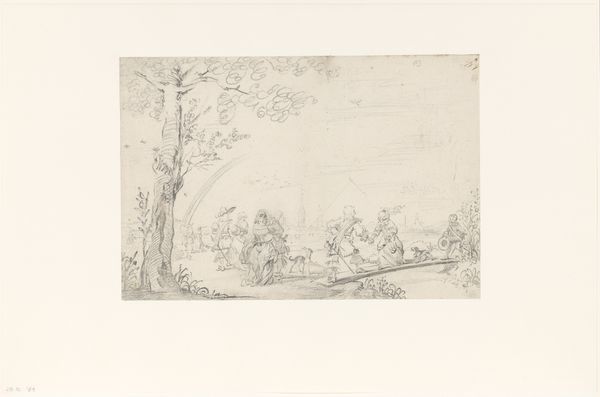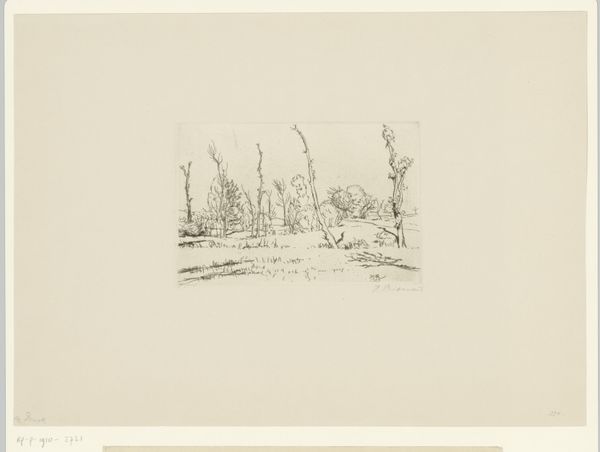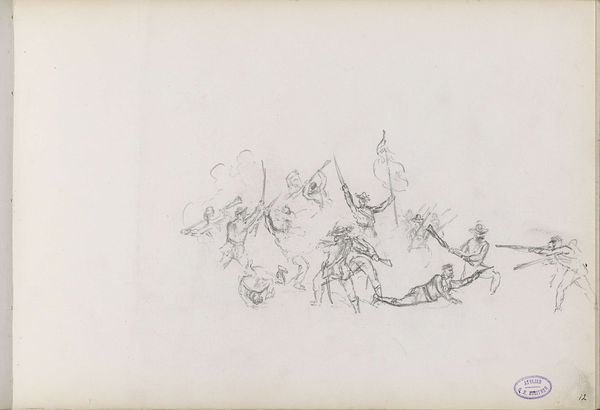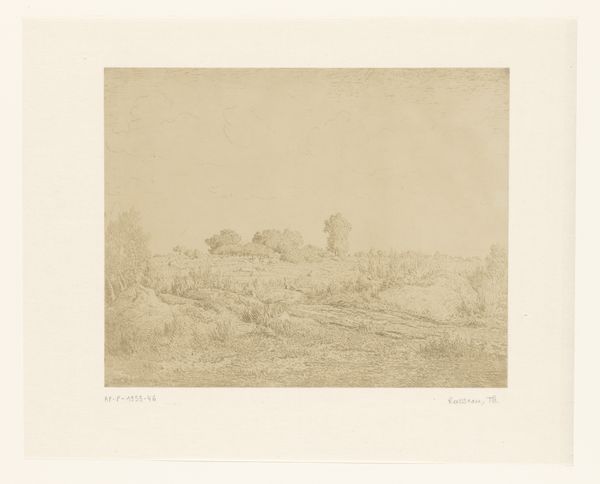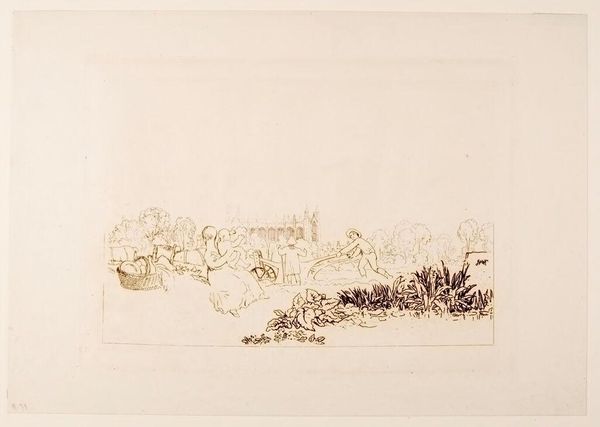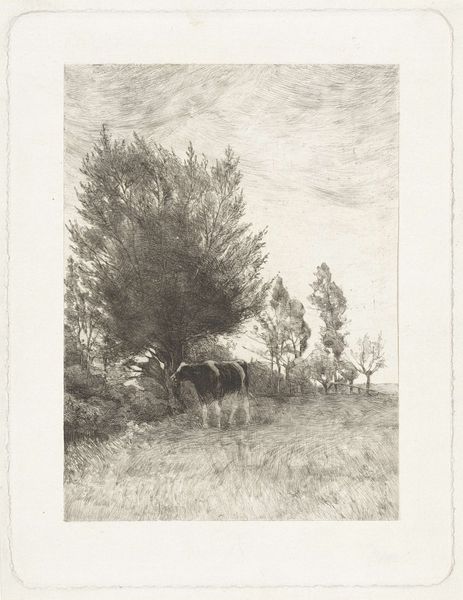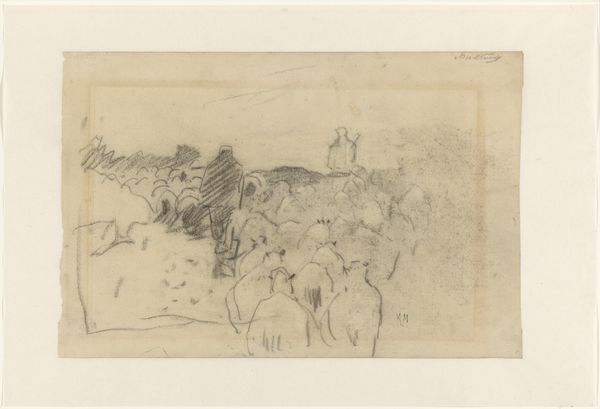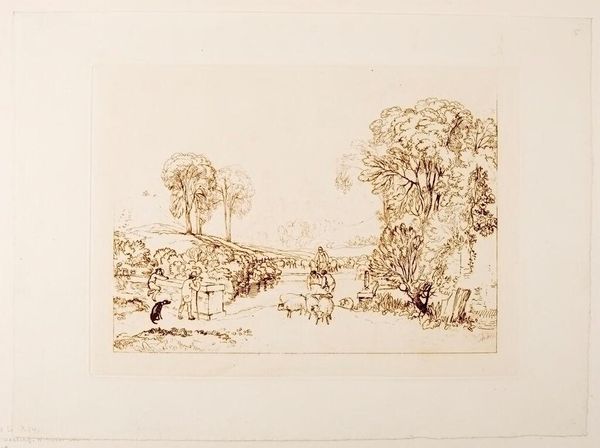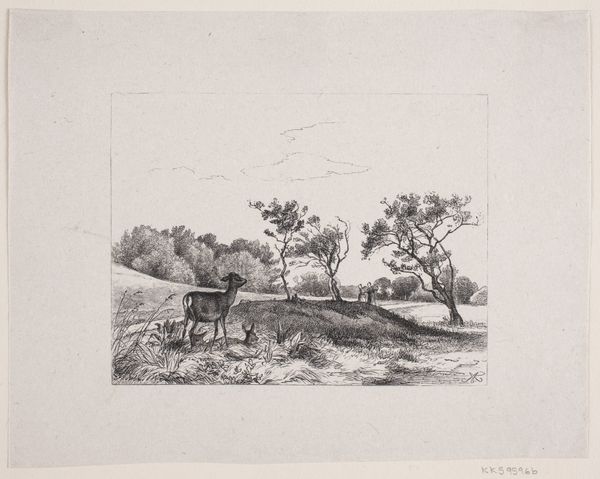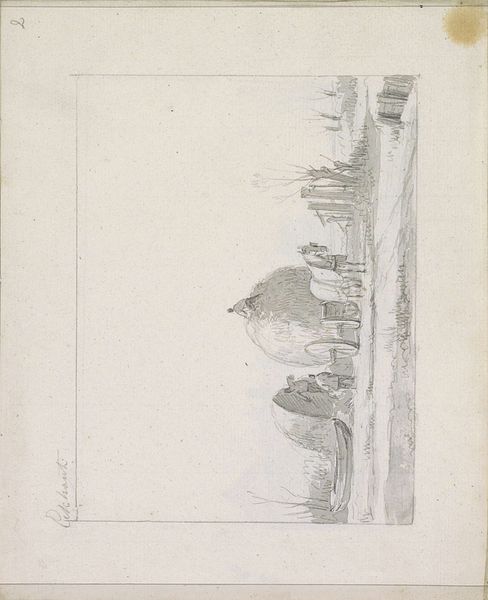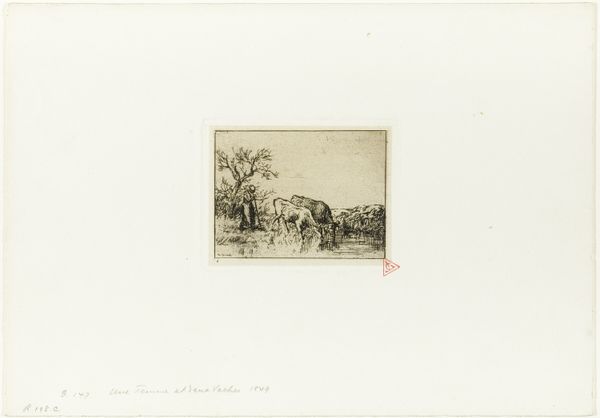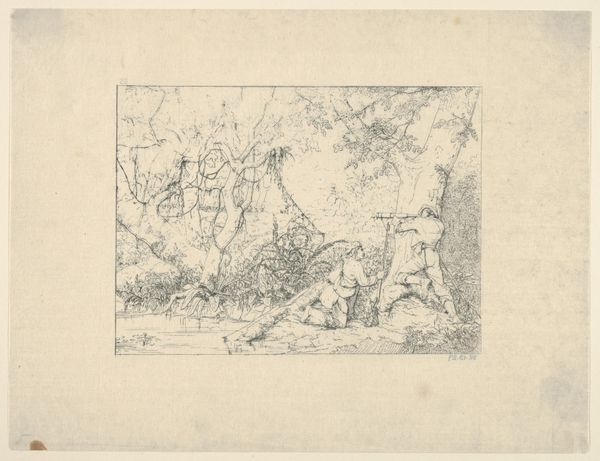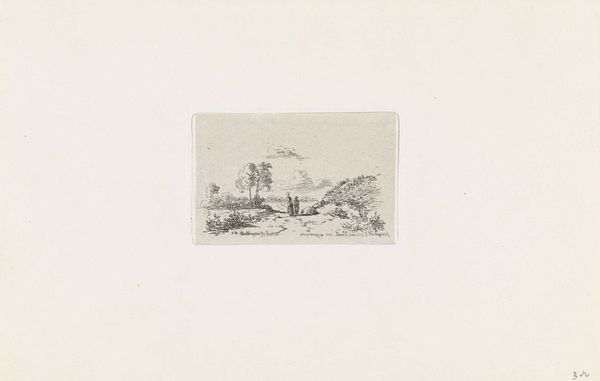
etching
#
etching
#
landscape
#
etching
#
realism
Dimensions: height 178 mm, width 212 mm
Copyright: Rijks Museum: Open Domain
Diederik Jan Singendonck etched this image of grazing cows at an unknown date. This simple pastoral scene speaks volumes about the cultural values of the Netherlands in the early 19th century. The rise of landscape art coincided with a growing sense of national identity. Images of serene countryside and productive livestock reflected a pride in Dutch agriculture, a cornerstone of the economy. But these images also mask social realities. The focus on grazing cows idealizes rural life, often overlooking the hardships faced by farmers and laborers. The rise of a wealthy merchant class created a demand for idyllic scenes, reinforcing a romanticized view of the countryside that contrasted sharply with urban life and market pressures. To fully understand this etching, historians can turn to agricultural records, economic data, and writings from the period. These resources can help us understand how images of rural life were constructed and consumed, reflecting both the realities and the aspirations of Dutch society.
Comments
No comments
Be the first to comment and join the conversation on the ultimate creative platform.
